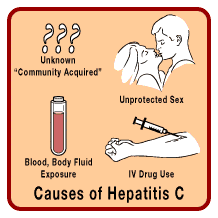A trio working for Abbott Laboratories Inc to treat hepatitis C obtained very high cure rates in new patients and patients who were unresponsive to the standard treatment alike – in clinical trials.
A dangerous disease

The typical treatment is expensive and often dangerous, having a 40-80% cure rate; not being involved in medicine, I cannot really say for sure why this high margin of error appears. It’s not very bad, for those who can afford the treatment, but not spectacular either. For people unresponsive to the treatment, the alternative treatment is quite dangerous in itself.
Remarkable results
The new project is called the Aviator, and it was shared with other scientists at the annual meeting of the American Association for the Study of Liver Disease (AASLD) in Boston. Both investors and patients were extremely satisfied with the drugs – a protease inhibitor called ABT-450, a polymerase inhibitor ABT-333 and ABT-267 from a class known as NS5A inhibitors.
The results were fabulous: 93 percent of patients who failed prior therapy had a sustained virologic response (SVR) – which in layman terms means they were cured.
“Nobody anywhere has broken the 50 percent mark in (cure rates) for this population,” Scott Brun, a senior Abbott research executive said in an interview. “These are robust results.”
Also, the treatment is interferon free. Of course, this is just the clinical trial, and of course drug companies tend to put their research in a better light and you can bet I’m not a fan of big pharma, but if the trials were conducted correctly, then this truly is great news for Hepatitis C patients.
Source



